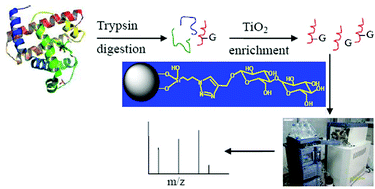Click maltose as an alternative to reverse phase material for desalting glycopeptides†
Abstract
Desalting

* Corresponding authors
a
The Second Affiliated Hospitals of Dalian Medical University, Dalian, China
E-mail:
zoulijuan1963@sina.com
b
Dalian Institute of Chemical Physics, Chinese Academy of Science, 457 Zhongshan Road, Dalian, China
E-mail:
lixiuling@dicp.ac.cn
Fax: +86-411-84379539
Tel: +86-411-84379523
Desalting

 Please wait while we load your content...
Something went wrong. Try again?
Please wait while we load your content...
Something went wrong. Try again?
J. Li, X. Li, Z. Guo, L. Yu, L. Zou and X. Liang, Analyst, 2011, 136, 4075 DOI: 10.1039/C1AN15362E
To request permission to reproduce material from this article, please go to the Copyright Clearance Center request page.
If you are an author contributing to an RSC publication, you do not need to request permission provided correct acknowledgement is given.
If you are the author of this article, you do not need to request permission to reproduce figures and diagrams provided correct acknowledgement is given. If you want to reproduce the whole article in a third-party publication (excluding your thesis/dissertation for which permission is not required) please go to the Copyright Clearance Center request page.
Read more about how to correctly acknowledge RSC content.
 Fetching data from CrossRef.
Fetching data from CrossRef.
This may take some time to load.
Loading related content
